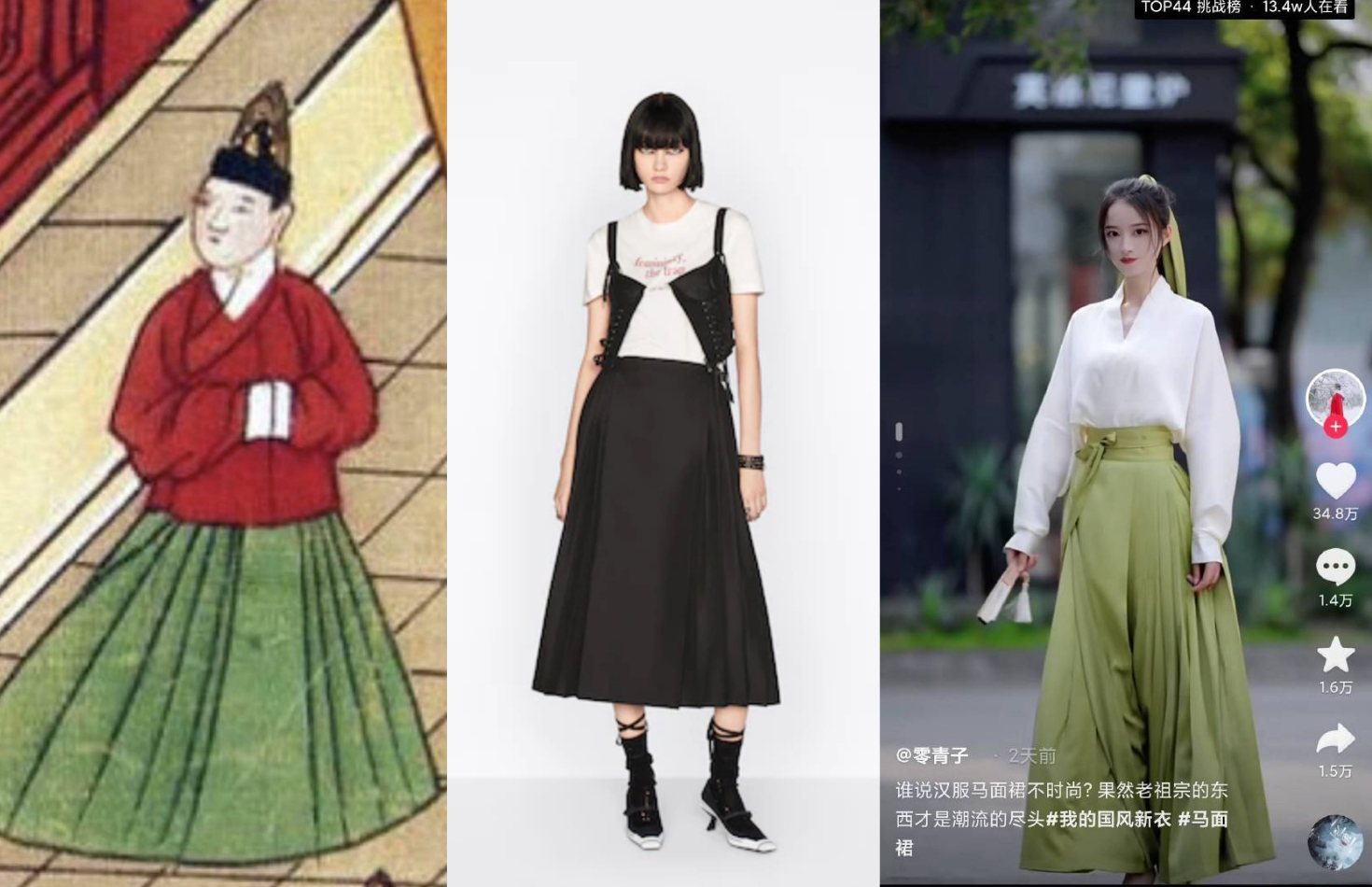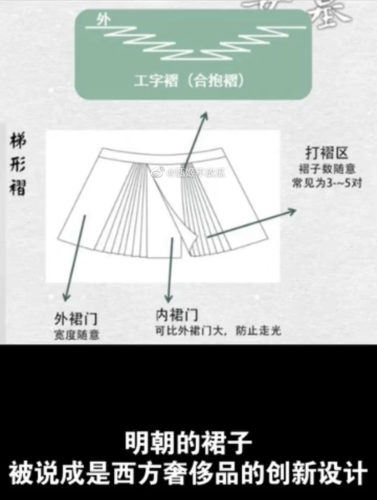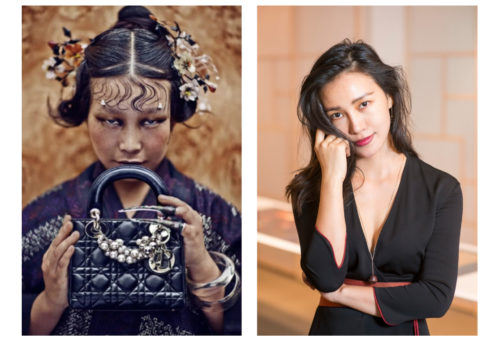Dior accused of appropriating Chinese culture with $3,800 skirt
“I’m all for designers taking inspiration from different cultures and sharing the unique beauty of them with their customers. But by calling the skirt an iconic silhouette it invented, Dior is misleading its customers around the world.”

French upscale fashion brand Dior has been accused of cultural appropriation in China, as social media users and state media alike blasted a skirt that appears to mimic the design of a traditional Chinese garment worn by women from centuries ago.
Featuring multiple openings in the front and back, pleated panels on the sides, and overlapping fabric, Dior’s product is described on its website as the brand’s “hallmark silhouette,” a flared skirt with a “new elegant and modern variation.” The mid-length pleated skirt, available online for a whopping $3,800, was launched in May as part of Dior’s Fall 2022 collection by creative director Maria Grazia Chiuri, but it didn’t come to the attention of Chinese critics until last Friday, when a Weibo user made a post comparing Dior’s item to the “horse face skirt” — or 马面裙 mǎmiànqún in Mandarin — a type of Chinese clothing that dates back to the Song dynasty. The mamianqun became popular during the Ming and Qing periods due to its functionality, as the multiple slits made it suitable for horse-riding.
Critics say that it’s disrespectful for Dior to claim originality of design without mentioning the dress’s Chinese roots.
“It looks just like a modified version of mamianqun. Plus, Chinese vendors have been selling skirts like this for a long time. There’s nothing original about Dior’s design,” the Weibo user wrote. The post has so far received more than 200,000 likes, while the hashtag #Dior plagiarism# racked up more than 20 millions views over the weekend.

On Taobao, a quick search for “mamianqun” produces hundreds of thousands of listings, with some branded as “modernized” and some more true to its original form. Most of the products are labeled as a type of hanfu — part of the Hanfu movement (汉服运动 hànfúyùndòng), which sees participants wearing Han Chinese ethnic clothing in their daily life as both a fashion practice and a nationalism-fueled political statement — and shows the sellers’ acknowledgement of the skirt’s history.
“I’m disgusted by how shameless Dior is. Today they steal our culture, tomorrow they will colonize our people. Have we forgotten the looting of Yuanmingyuan and our history of humiliation?” a Weibo user responded. Many called for a boycott of the fashion label, urging Chinese celebrities who have worked with Dior to declare their views on the matter by cutting ties with the brand.
A slew of Chinese fashion experts and designers also weighed in on the matter, including Zhāng Yàn 张彦, a young Chinese fashion designer who made his debut at the New York Fashion Week in 2019. In a video released on Saturday, which so far has been viewed over 280,000 times, Zhang validates the criticism while explaining why he thinks what Dior did is a more serious offense than plagiarism. “I’m all for designers taking inspiration from different cultures and sharing the unique beauty of them with their customers,” Zhang says. “But by calling the skirt an iconic silhouette it invented, Dior is misleading its customers around the world.”
State media outlets chimed in on the controversy. “The backlash is growing and Dior must give a response. Without revealing any confidential information, Dior should be transparent about how the design process came about,” according to an opinion piece on People.cn, an online portal of People’s Daily.
Dior has yet to respond to the criticism, but it has quietly removed the skirt from its Chinese website. The comment sections of the brand’s recent posts on Weibo have been flooded with negative comments asking it to apologize and pull the item from stores in other countries.
Dior has a history of sparking cultural outcry over its designs and marketing campaigns. In 2019, the luxury fashion house was accused of cultural appropriation over an advertisement that starred no celebrities of Mexican heritage despite purportedly aiming to celebrate Mexican culture. The same year, the brand faced backlash for promoting its perfume line Sauvage with an advertisement featuring Native American imagery.
Dior has also faced its share of faux pas in China, where consumers are increasingly sensitive and vocal about what they deem as offensive depictions of Chinese culture or people by Western companies. Last year, the designer drew ire in China after an exhibition in Shanghai featured a photo of a stern-looking Asian woman wearing a traditional dress and holding the brand’s iconic Lady Dior handbag, which was criticized by many for looking “sinister” and “perpetuating Western stereotypes of Asian faces.”



